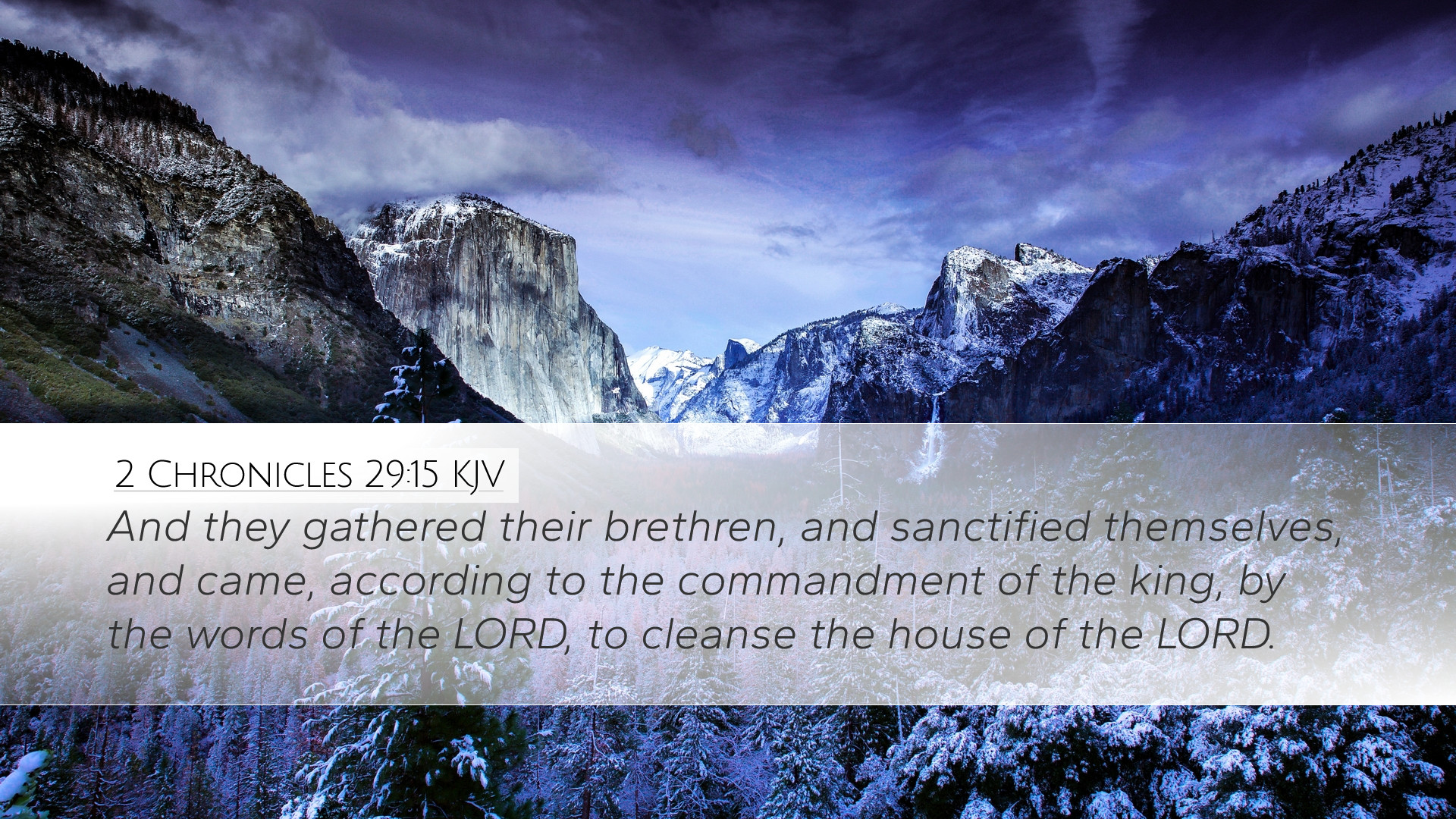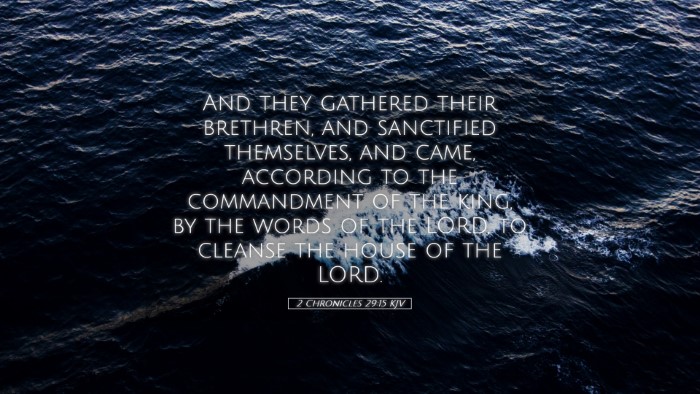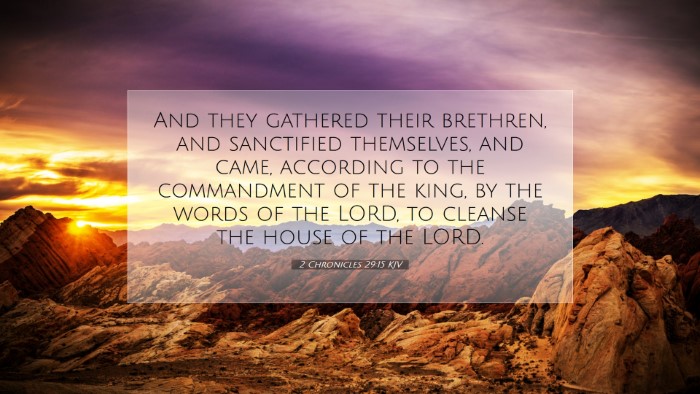Commentary on 2 Chronicles 29:15
2 Chronicles 29:15 reads: “And they gathered their brethren, and sanctified themselves, and came, according to the commandment of the king, by the words of the LORD, to cleanse the house of the LORD.” This verse is a pivotal moment in the narrative of King Hezekiah’s reign, emphasizing the themes of purification, restoration, and divine instruction.
Contextual Background
The book of 2 Chronicles depicts the history of Judah and is particularly concerned with the lives of its kings. Hezekiah, who became king at a young age, initiated significant religious reforms to bring the worship of Yahweh back to the forefront after years of idolatry under his predecessors. This verse occurs shortly after Hezekiah ascends to the throne and seeks to cleanse the temple of the previous corrupt practices.
The Gathering and Sanctification
The verse begins with the assembly of brothers, a communal aspect essential for the task at hand. Each commentary suggests the importance of unity among believers:
- Matthew Henry emphasizes that gathering together is an essential act of worship and mutual strengthening among God’s people.
- Albert Barnes reflects on the need for collective sanctification, indicating that individual purification was not sufficient; the community had to be aligned in dedication to the Lord.
- Adam Clarke highlights that this gathering set a tone of shared responsibility and commitment to restoring proper worship.
Sanctification Process
Sanctification is both a personal and a communal act. The gathering of the Levites and priests indicates that the leaders set the example by first sanctifying themselves:
- The sanctification involves a physical and spiritual cleansing necessary before service in the temple.
- This act demonstrates the principle that leadership in spiritual matters requires purity and dedication to God’s commandments, as noted by Henry.
Divine Commandment and Instruction
The mention of "according to the commandment of the king, by the words of the LORD" highlights the intersection of divine instruction and royal decree:
- Albert Barnes notes that this reflects the harmony intended between God’s word and the actions of the king.
- Adam Clarke points out the necessity of adhering strictly to divine directives, as the temple's restoration cannot occur without following God's established order.
The Cleansing of the House of the LORD
The final part of the verse, “to cleanse the house of the LORD,” encapsulates the overall intention of Hezekiah’s reforms:
- This act was both literal and symbolic, as it represented not only the physical cleaning of the temple but also a restoration of honor and sanctity to God’s dwelling place.
- Matthew Henry suggests this cleansing signifies a return to true worship, demonstrating that God desires a holy place for His people to meet him.
- Albert Barnes elaborates on how the house of the LORD symbolizes the hearts of the people, indicating that overarching spiritual purity starts with the temple as the center of worship.
Theological Implications
This verse invites deep theological reflection on several points:
- The Importance of Community: The gathering reinforces the value of corporate worship, emphasizing that individual sanctity contributes to the whole community's spiritual health.
- The Role of Leadership: Leaders are accountable to set the spiritual tone and direction, emphasizing that they must prioritize their spiritual lives before guiding others.
- The Necessity of Purity: The call to cleanse the temple reminds contemporary readers about the significance of maintaining a pure worship environment, free from distractions and impurities.
Practical Application
Pastors, students, and theologians can draw actionable insights from this verse:
- Encouraging congregational gatherings focused on worship and purification through prayer and collective repentance can help revitalize a community.
- Leaders should regularly examine their lives in the light of God’s standards, remembering that their example can lead others away from or towards God.
- Regular cleansing and restoration programs for church facilities can symbolize a deeper need for spiritual revival and re-dedication to God’s service.
- Understanding the temple's significance today can redirect focus to the body of Christ as the dwelling of the Holy Spirit, calling for personal and communal sanctification.
Conclusion
In summary, 2 Chronicles 29:15 serves as a poignant reminder of the necessity of communal purity, leadership integrity, and the importance of returning to God’s commands in any acts of worship and devotion. Through the commentary of respected theologians such as Matthew Henry, Albert Barnes, and Adam Clarke, believers are challenged to reflect on their paths of worship and sanctification, ensuring they align with God's desires for His people today.


